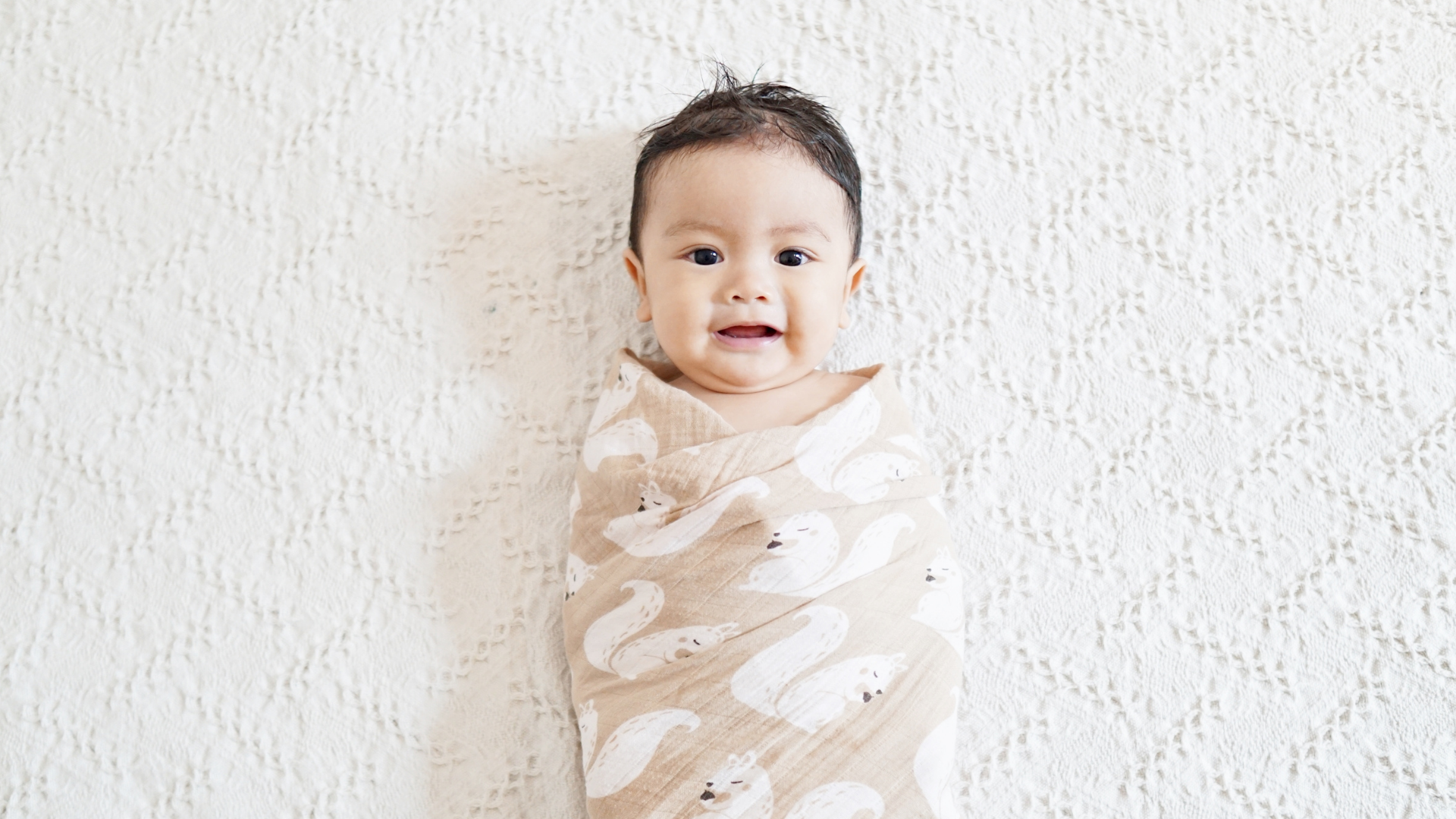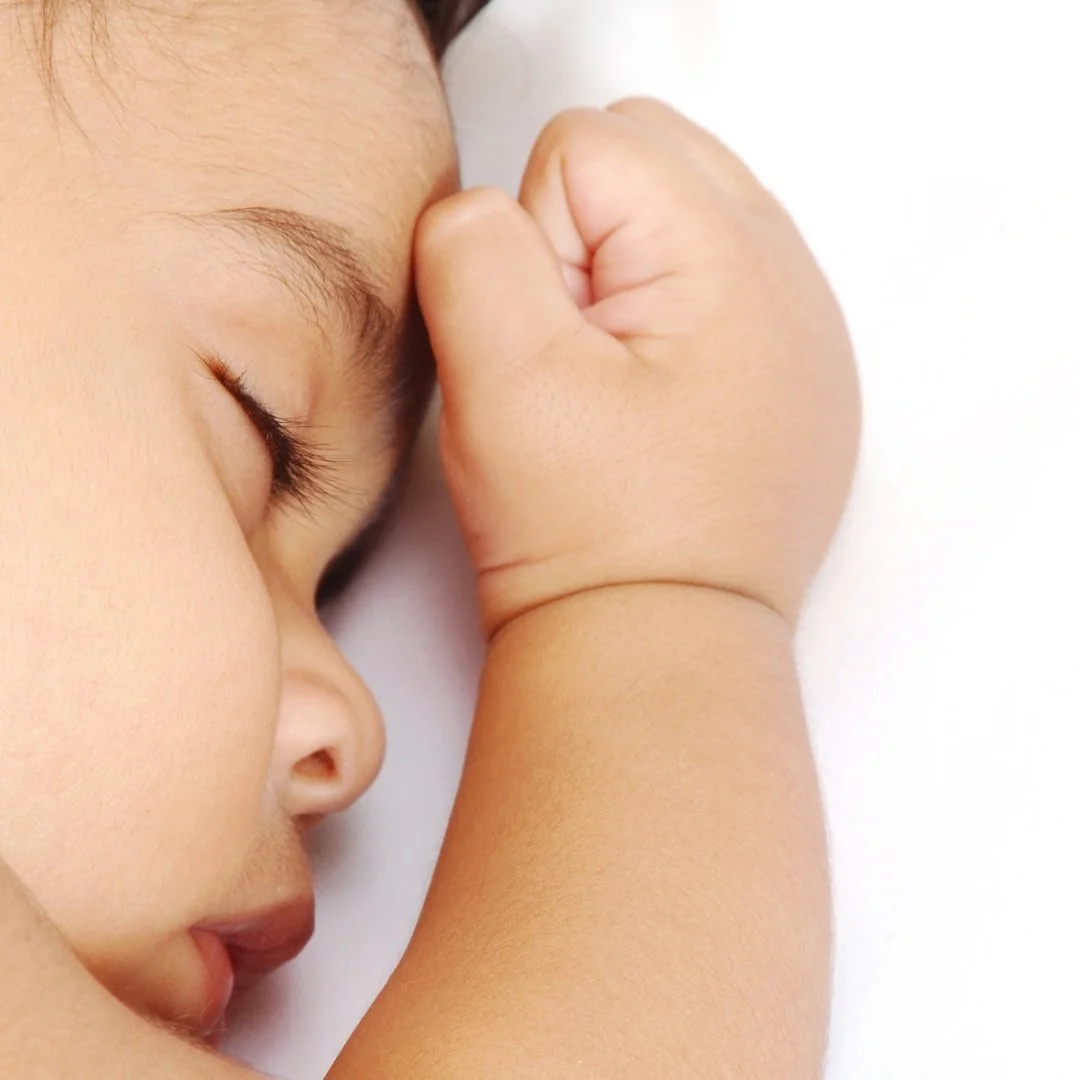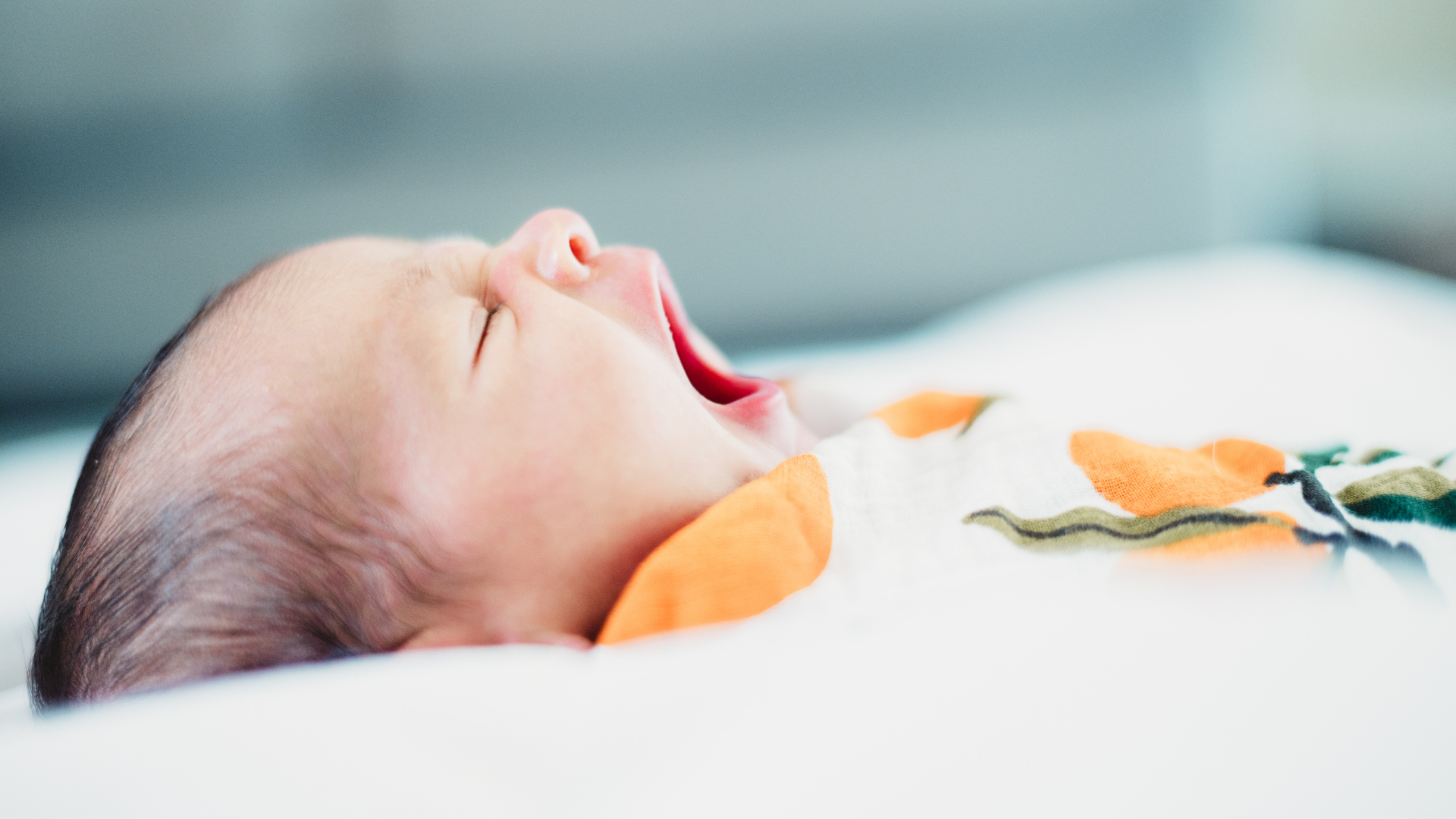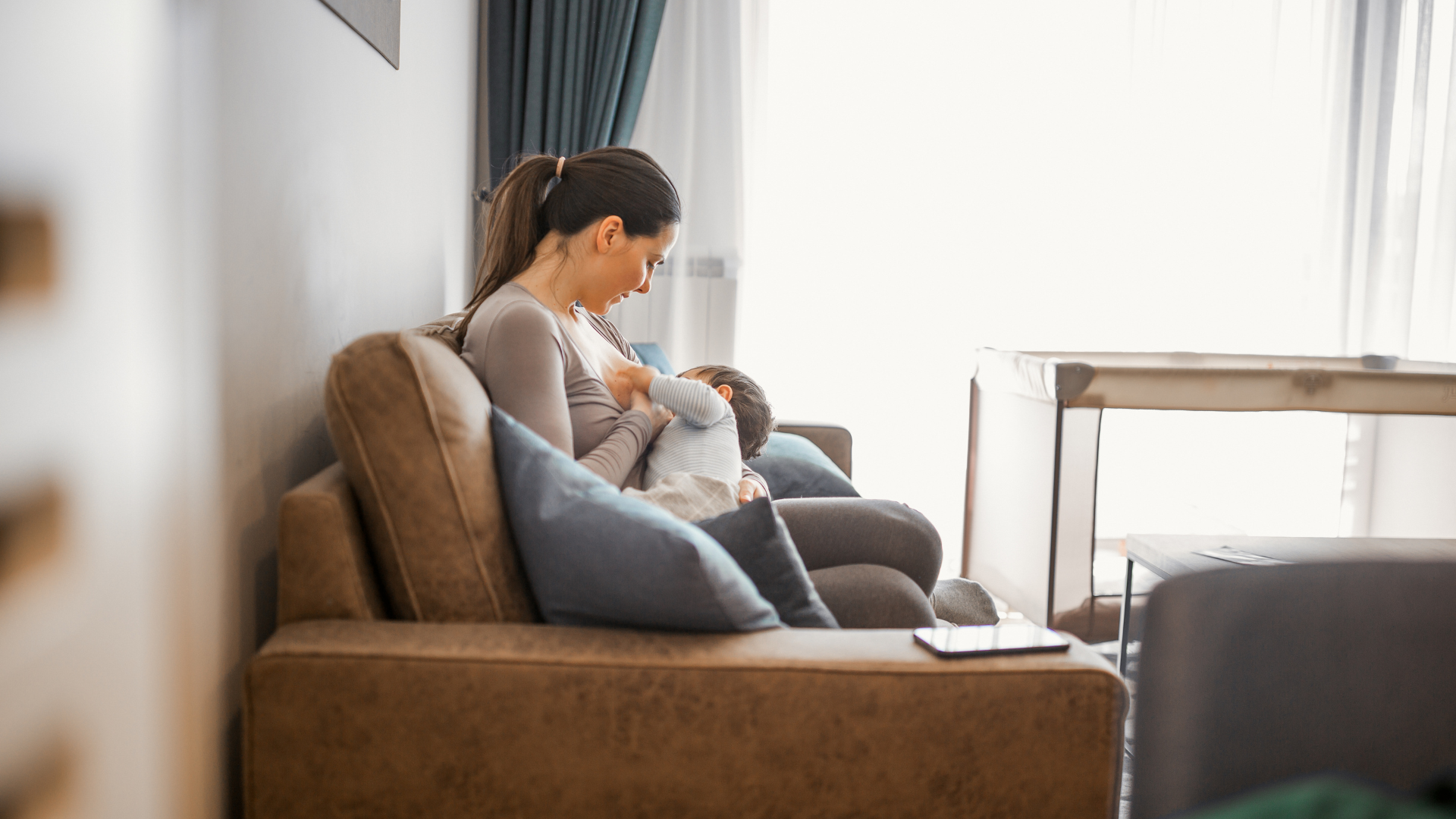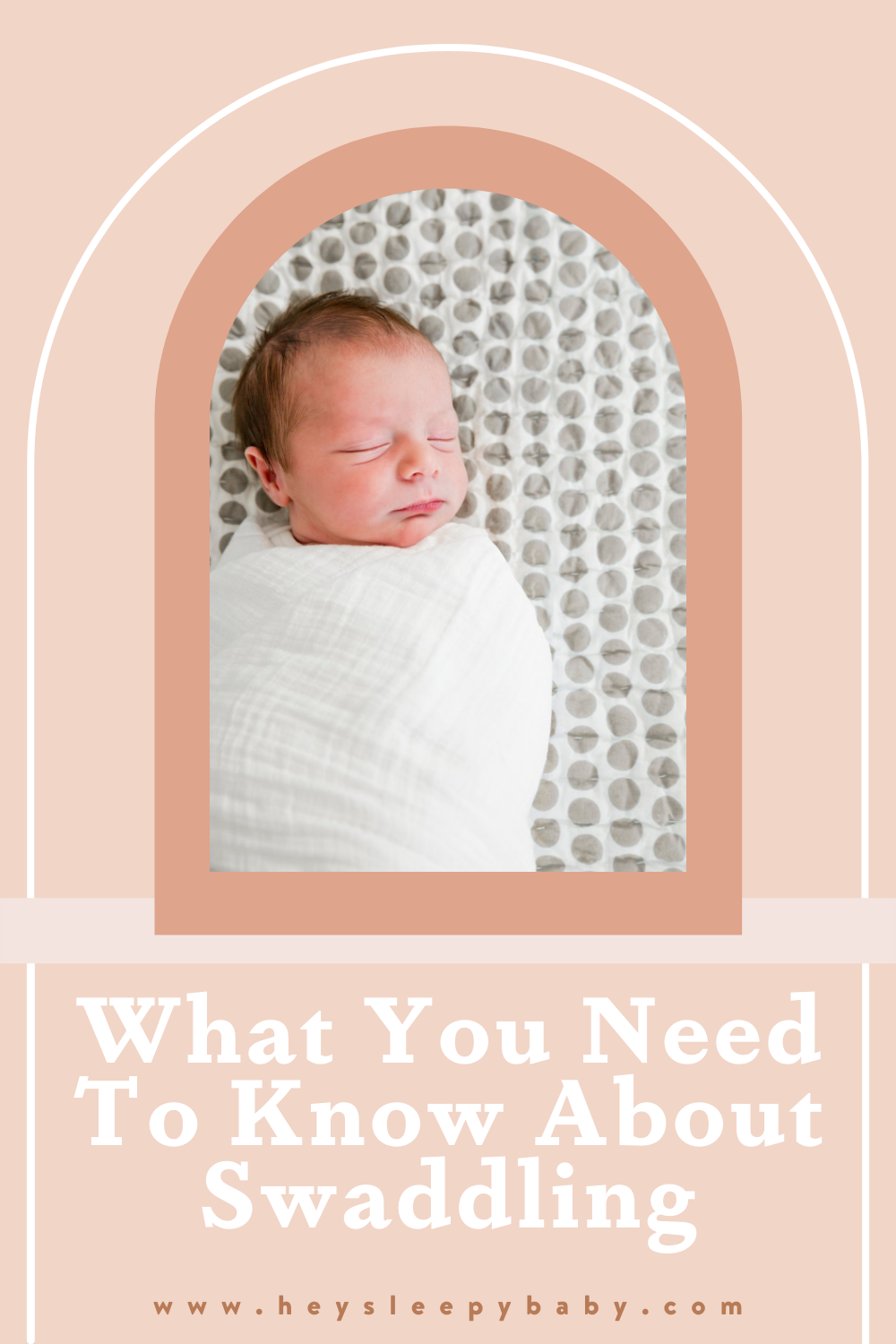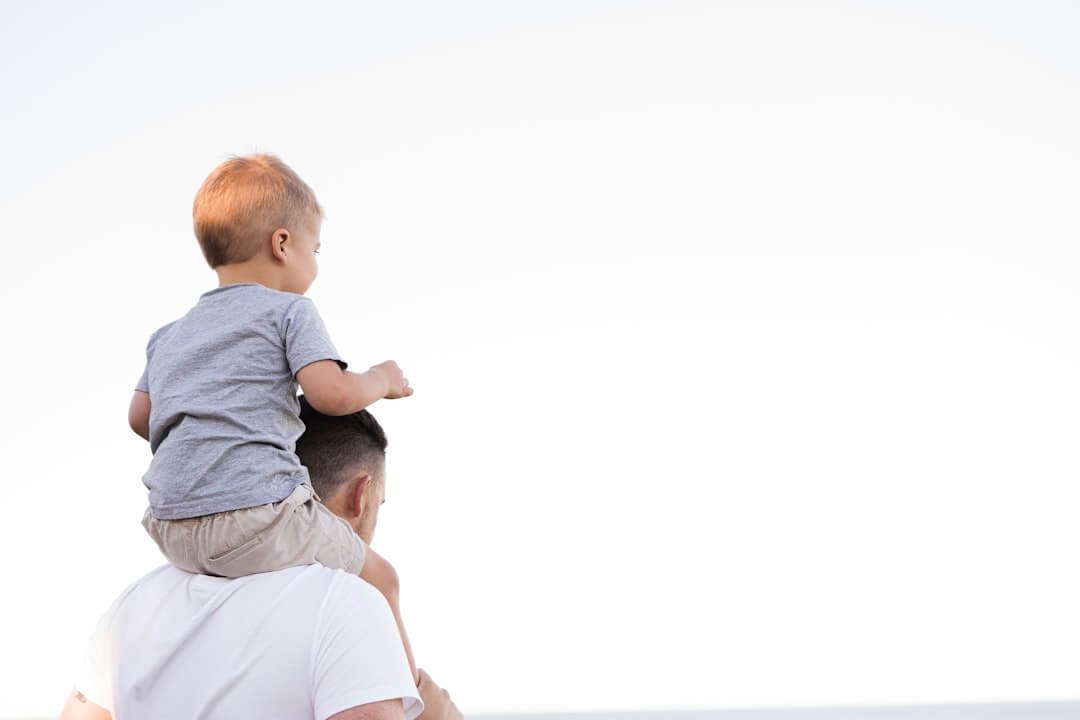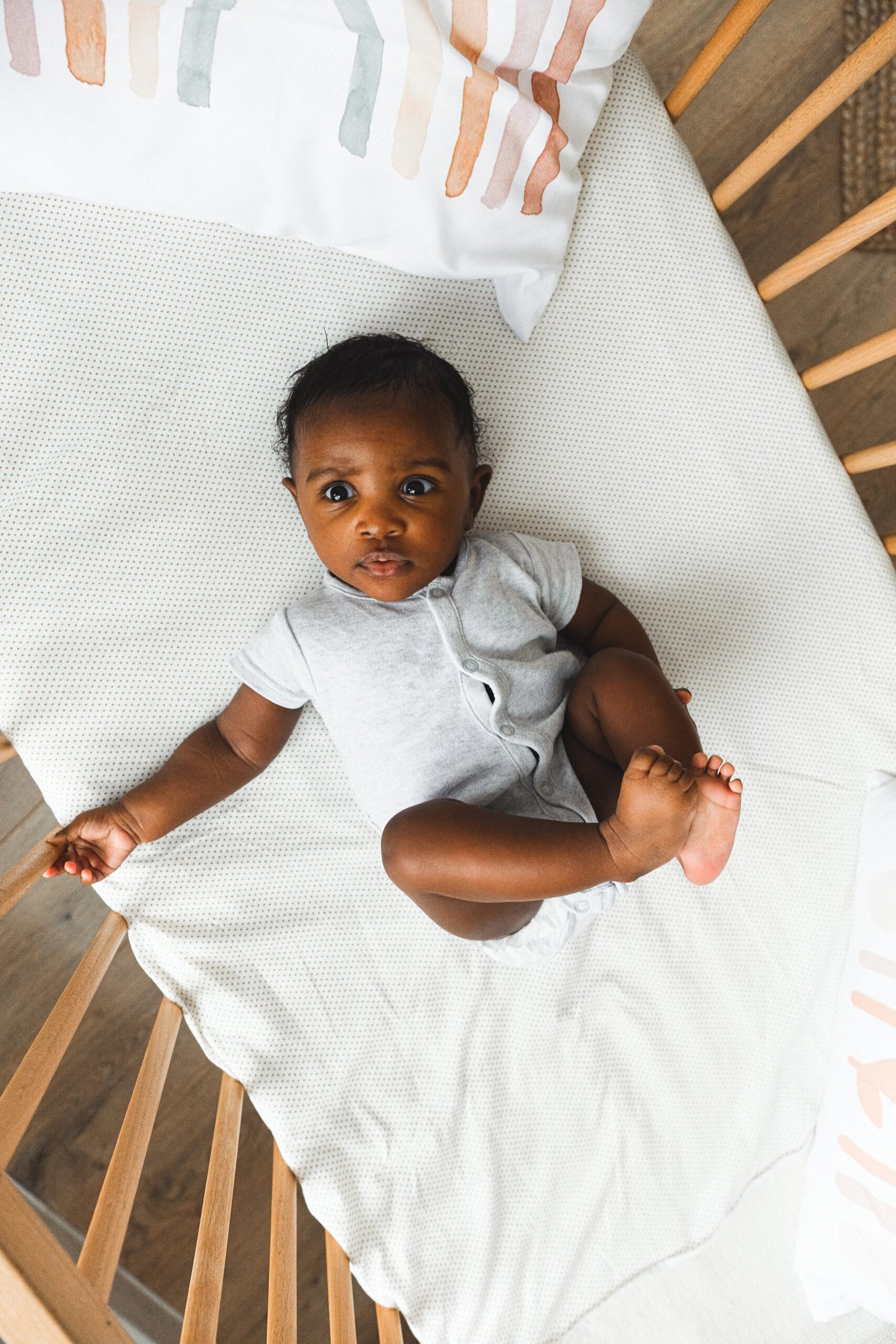I'm Rachael
Mom of 3 & Baby Sleep Expert with Big Sis Energy
& I’VE DONE ALL THE RESEARCH FOR YOU ALREADY.
Better sleep for the entire family
BROWSE COURSES
hey!
What You Need to Know About Swaddling
in this post:
Let’s talk swaddling! How many of you thought you had to swaddle your baby? I was definitely under the impression that swaddling was standard practice for babies. I assumed it’s just something you do and that all babies love it. Of course, I learned early on in my parenting journey that those types of sweeping generalizations are not realistic or helpful. After going to several providers and getting very different advice from each of them on how to care for my newborn, I felt confused and learned a hard lesson- there is A LOT of subjective advice given to new parents! In this post, I hope to give you some helpful information so you can make educated decisions regarding this age-old practice.
Disclaimer: This article is not medical advice. Although this information was compiled by an Occupational Therapist, if you have specific concerns with your child, please seek advice from your licensed medical provider. No content on this site, regardless of date, should ever be used as a substitute for direct medical advice from your doctor or another qualified clinician.
history of swaddling
Swaddling is a practice that has been around for centuries and can be found across cultures and contexts. Swaddling was done historically in ancient times and was thought to help the infant’s limbs grow straight and prevent deformity. Just like other infant care trends, swaddling has fallen in and out of favor throughout the years. To this day some groups, such as members of the Navajo tribe, continue to use traditional equipment such as cradleboards to secure their babies.
Mainstream swaddling came into vogue again in the 1990s when the American Academy of Pediatrics (AAP) recommended that infants sleep on their backs to help with SIDS prevention. Prior to this recommendation, many families would put their babies to sleep on their tummies. In parents’ search for ways to help their babies sleep on their backs, they began to swaddle them. This was in part because parents found that babies would startle awake more when they were placed to sleep on their backs.
So, do you need to swaddle your baby? The short answer is no. If your baby is content, there is no need to swaddle. My daughter, for example, loved to put her hands up by her face and would wiggle them out of her swaddle wraps and blankets. After a few weeks, we ended up swaddling her with her arms out. Sometimes I feel sheepish when I think about us battling her to bring her arms to her side; however, she let us know what she preferred, and eventually, we got the message.
What Are The Benefits of Swaddling?
Proprioceptive input
Many people claim that a swaddle mimics conditions in the womb. As Rachael explained on her Instagram stories about swaddling (check them out, they’re great!), this is not exactly true. Babies in the womb have freedom of movement, and if your baby was really active during your pregnancy, you can attest to this! However, what a swaddle does do, is give your infant proprioceptive input in their joints that they also felt in the womb. Proprioception is the way that our joints and body receive input (such as pressure). This input is important in helping us to know where our body is in space.
calming/soothing babies
Some babies are really calmed or soothed by being tightly wrapped in a swaddle. It can be particularly helpful for babies with neurologic problems or colic, or for babies born addicted to drugs (McCarthy, 2020).
Safe infant sleep recommendations
As noted above, swaddling may help with the recommendations to lay infants to sleep on their backs. If they are swaddled tightly, this complies with the AAP recommendation to have no loose bedding or blankets in their sleep space.
Claims That Are Framed As Benefits But May Need To Be Re-Examined
Some claim that swaddling leads to better sleep for parents and babies. While swaddling can lead to deeper and longer stretches of sleep, are deeper longer stretches of sleep a good thing for a newborn? I would argue that normal infant sleep, especially in those first few weeks of life, includes frequent wakings. For example, if you are breastfeeding, those frequent night feedings can help you regulate your milk supply. Frequent wakings are also a natural protective mechanism against SIDS. Attempts to lengthen and deepen sleep in early infancy should take these (and other factors) into consideration.
As noted above, some parents find that swaddling can help reduce the Moro reflex that may happen when you lay your baby down in the crib. This reflex occurs when your startled baby splays their arms out in extension, sometimes moving their legs, before they rapidly bring their arms back together. The theory is that babies are wrapped tightly and so they also are less likely to move and trigger this natural reflex as they startle awake. These primitive reflexes are a normal and healthy part of your child’s motor development, and they don’t need to be suppressed. However, it’s understandable that some families want to prevent the startle reflex when their little ones transfer to sleep spaces. In case you were wondering, this reflex typically is completely integrated (I.e. goes away), for most babies, between three-six months.
What Are Some Of The Cons When It Comes To Swaddling?
increase SIDS risk
Swaddling can actually increase the risk for SIDS if the baby is not properly placed, or if the swaddle becomes loose. If your baby is swaddled and they move to their side or stomach, they are at increased risk for SIDs. When infants are swaddled this restricts their ability to move to a safe, unrestricted position. A loose swaddle also is a SIDS risk factor as it can cover a baby’s face and restrict their breathing. Currently, some major hospitals are starting to stop giving swaddles and receiving blankets and instead are giving wearable blankets and sleep sacks to make swaddling safer and easier for families.
Swaddling can also increase the risk for SIDS when baby starts rolling. Unfortunately, when your baby will roll is hard to predict. While most babies start rolling around two months, some babies roll at a few days old. This makes it hard to control that risk.
limits mobility
Swaddling during the day or for extended amounts of time limits a baby’s mobility. Movement is very important for your baby’s development. If you decide to swaddle, make sure you are giving your child lots of container-free time where they can move throughout the day. This time of free movement is going to be important for them and the integration of their motor reflexes such as the Moro reflex mentioned above.
Risk for hip dysplasia. If your baby is in a tight, traditional swaddle with their legs in extension, this can increase their risk for hip dysplasia.
Swaddling doesn’t relieve tension that many babies naturally have from being in utero. This was my baby. She had a tongue tie along with some body tension that made breastfeeding challenging. As you can imagine, lots of babies are born with tension in their bodies both from conditions in the womb and during the birthing process. Many of my daughter’s providers recommended lots of tummy time and body work to help her move in order to release her physical tension and help with breastfeeding. Swaddling does not promote this type of tension release that happens with unrestrained movement.
Babies are unable to bring their hands to their mouth when swaddled. This can be hard as sucking on their fingers is one of the most natural self-soothing mechanisms babies have. They also practice sucking by sucking on their fingers. This practice of sucking on their hands can be helpful if your baby struggles with either nursing or bottle feeding. Unfortunately limiting your child’s ability to access their hands limits that potential practice time. Breastfed babies also use their hands to help orient themselves to your breast and bring the nipple to their mouth. Keep this in mind for night feedings.
eventually, all babies have to stop
Lastly, eventually, all babies have to stop being swaddled. This process can be challenging for babies and parents if your child has come to rely on the swaddle as a primary comfort tool.
if You Swaddle, When Should You Stop?
Now knowing what you know, you decide to still swaddle your baby, when should you stop?
If you watch her Instagram stories, Rachael recommended that you stop swaddling by six weeks, and there are some advantages to stopping earlier. The official word from the American Academy of Pediatrics is to stop swaddling by eight weeks, as this is in the window of when babies start to roll. This eight-week recommendation does include babies who were born prematurely.
There are times when swaddling is absolutely NOT recommend:
-
When bed sharing
-
When it is really warm in the baby’s sleep space, as baby can get overheated which puts them at a higher risk for SIDS
-
When they start rolling
-
If your baby doesn’t like it
Also, totally ok to also swaddle your newborn with their arms out. I also recommend swaddles that keep some looseness around your baby’s waist and hips to prevent hip issues.
Whew! Hopefully, all this information was helpful to you. As I am an OT, I like to nerd out on the research about this and I found several helpful articles. I will put the references down below.
Featured
Responsive sleep tips and support for parents of multiples or twins.
What are floor beds? When to use them? And How to use them?
Before you start changing anything it’s important that you have ruled out any underlying reasons why your infant might have such a strong link to staying latched.
Sources:
The American Academy of Pediatrics. (2011, September 8). AAP News. https://www.pwrnewmedia.com/2011/posna/newsletter/september/downloads/Swaddle.pdf.
Claire McCarthy, M. D. (2020, June 17). Should you swaddle your baby? Harvard Health. https://www.health.harvard.edu/blog/should-you-swaddle-your-baby-201605249730.
Donaldson, C., Clancey, S., & Russell, M. (2020). Understanding Navajo Parents’ Beliefs About Cradling and Early Mobility Practices. In Parents and Caregivers Across Cultures (pp. 45-56). Springer, Cham.
Frenken, R. (2012). Psychology and History of Swaddling: Part Two: The Abolishment of Swaddling From the 16th Century Until Today. The Journal of psychohistory, 39(3), 219.
Landro, L. (2013, May 14). A Better Night’s Sleep for All. The Wall Street Journal. https://www.wsj.com/articles/SB10001424127887324216004578480952498348128.
Oden, R. P., Powell, C., Sims, A., Weisman, J., Joyner, B. L., & Moon, R. Y. (2012). Swaddling: will it get babies onto their backs for sleep?. Clinical pediatrics, 51(3), 254-259.
Pease, A. S., Fleming, P. J., Hauck, F. R., Moon, R. Y., Horne, R. S., L’Hoir, M. P., … & Blair, P. S. (2016). Swaddling and the risk of sudden infant death syndrome: a meta-analysis. Pediatrics, 137(6).
Saslow, R. (2012, June 29). The story behind swaddling. The Washington Post. https://www.washingtonpost.com/blogs/on-parenting/post/the-story-behind-swaddling/2012/06/28/gJQAgWyq9V_blog.html.
Task Force on Sudden Infant Death Syndrome. (2011). SIDS and other sleep-related infant deaths: expansion of recommendations for a safe infant sleeping environment. Pediatrics, 128(5), e1341-e1367.
binge reads
We think you'll love these
You deserve to the
baby stage, not just "survive it."
And you DON'T have to sacrifice your values, ignore your instincts, or force yourself to follow a method you don't align with just to get your baby back to sleep.
I’m here to help you create a restful, sustainable sleep environment that honors both your baby’s needs AND your own (without the stress OR the guilt!) because, no, you don’t have to choose between the two.
enjoy!
BABY SLEEP COURSES →
BABY SLEEP CONSULTS →
Wish you could help your baby sleep better without resorting to sleep training? Download my FREE guide to a good night’s sleep and learn 8 simple, science-backed tips for supporting your child’s needs.
Traditional sleep training methods don’t have to be your solution to better sleep.
SLEEP TRAINING ISN’T THE ONLY WAY TO GET GOOD SLEEP
Hey, I'm Rachael and Hey, Sleepy Baby is for parents who want to get their nights back, without sleep training their babies.
NO ONE TOLD US POD
explorING the untold truths of parenting
